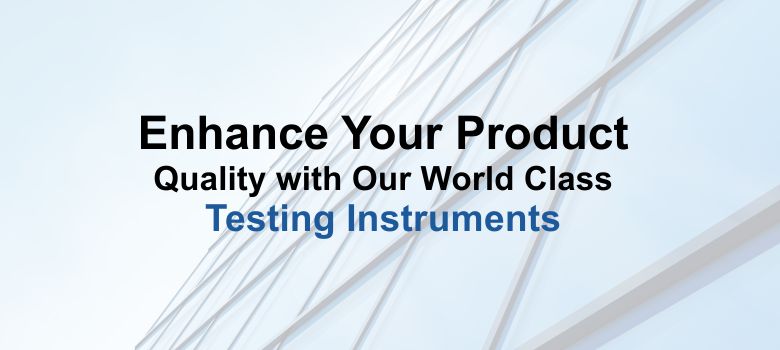
 The packaging industry has been dominantly using polymer in every type of packaging mode. PET material for beverage packaging in the form of PET bottles, wrapping foils, carry bags, etc. However, the growing awareness about how single-use plastic packaging is turning into poisonous plastic pollution gave rise to Paper packaging material (Poly Films Testing Instruments).
The packaging industry has been dominantly using polymer in every type of packaging mode. PET material for beverage packaging in the form of PET bottles, wrapping foils, carry bags, etc. However, the growing awareness about how single-use plastic packaging is turning into poisonous plastic pollution gave rise to Paper packaging material (Poly Films Testing Instruments).
The switch is quite prominent and visible nowadays. Using paper bags for groceries. Bakery products covered in butter paper, small packages delivered via online shopping are also seen to be packed in paper rolls or boxes made of thick paper.
This switch will prove to be beneficial to our planet in the long term but when it comes to the packaging industry, the paper still needs to clear its path by proving itself as effective as the plastic packaging was.
Importance of quality control in Paper packing production
Paper, although good for nature, has to clear many barriers when taken for packaging. Paper may be biodegradable but as compared to plastic has many drawbacks when used as a packaging material. Papers lack the strength of carrying the excessive load. Their rigid structure does not allow them to stretch like plastic bags. They are more vulnerable to sudden and even slight impact and much more. In addition to all that few packaging criteria compared to plastic, they pass easily. One of those is friction behaviour.
Paper packages are made of cellulose. Their composition allows them a rough surface and leads to a good level of resistance against slippery situations. They can easily provide a high amount of frictional resistance when slid over any other material.
However, the excessive delivery frictional force is also not acceptable. As per the industry, they are going to be used in, there are some set standards for friction too and they need to clear that.
Thus, an effective quality inspection for its properties and behaviour must be done before using it in the production line.
How friction behaviour controls the quality of Paper?
Frictional properties of any packaging material decide how the product will behave at its end-use. While they are stored in a pile one over the other and any product is swiped in between, will they fall or slip or they will deliver the required friction and stand by.
While they are transported by roads, will their surface resist the bumps and jerks of the road and do not slip off.
Or, when they are sued in any household shopping they will not slip off the hands but will deliver a firm holding.
All these properties and end behaviour can only be told when tested. Evaluation of the co-efficient of friction in paper packaging can let a user or manufacturer know early on how the material will behave and testing allows the scope of improvement in the produced material before it goes to the market for customers.
What technology is best to evaluate the coefficient of friction?
To evaluate the frictional behaviour of paper packaging one must assure that the paper material must undergo all the possible sliding experiences so that the user can check its behaviour. And the performance to be judged on quality criteria for the global platform must be recorded in numbers.
Co-efficient of friction tester brings endless possibilities to evaluate the behaviour of paper packing material and ensure the best quality delivered to end-user.
The machine is equipped with a tight clamping mechanism that holds the sample paper to be tested on base. Above that, the equipment allows a block that can be wrapped in the same material as the sample or other material. The block is slid over the test material and the frictional co-efficient is recorded. This way we can see if the paper package material matches the set frictional criteria.
Thanks to Pacorr Testing instruments, we have all the required quality testing instruments that have helped us to ensure the best quality delivered to our clients.

Danish
Fair Exports Pvt. Ltd.

